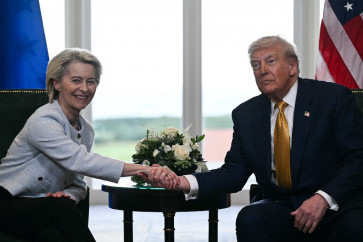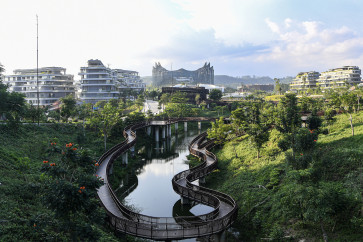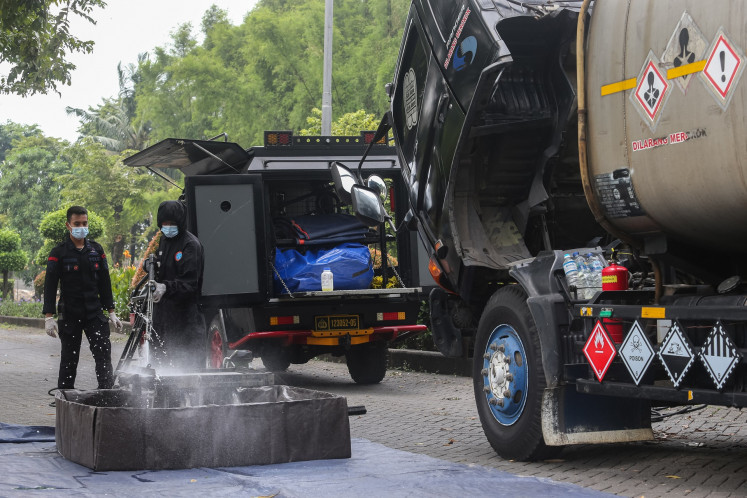Popular Reads
Top Results
Can't find what you're looking for?
View all search resultsPopular Reads
Top Results
Can't find what you're looking for?
View all search resultsNatuna gas development faces challenges
Considering high CO2 content, utilization of carbon capture was critical, and stakeholders would have to pay attention to the promised carbon capture rates: Analyst
Change text size
Gift Premium Articles
to Anyone
A
nalysts expect the global shift to renewable energy and technical problems to pose key challenges as the government scouts for investors to develop oil and gas blocks in Natuna, Riau Islands.
The government has continuously expressed its desire to develop the East Natuna gas field in Riau Islands province, which is one of the largest unexplored gas reserves in the world.
The block has gas-in-place estimated at more than 200 trillion cubic feet (tcf), but with carbon dioxide content in excess of 60 percent, a Wood Mackenzie study shows. The total proven reserves of natural gas are pegged at 46 tcf.
This level of reserves is far bigger than that of the Masela Block in the Arafura Sea and that of the Indonesia Deepwater Development (IDD) Block in the Makassar Strait, which hold up to 16 tcf and 2.6 tcf of oil and gas reserves, respectively.
Putra Adhiguna, an energy economist at the Institute for Energy Economics and Financial Analysis (IEEFA), said that, considering the high CO2 content, utilization of carbon capture was critical, and stakeholders would have to pay attention to the promised carbon capture rates.
“The high CO2 content means the investment window is closing fast, as global companies shift to renewable energy,” he told The Jakarta Post on Wednesday.
However, carbon capture technology had a patchy track record, Putra noted, having repeatedly failed to meet the promised 90 to 95 percent capture rates.
Carbon capture and storage (CCS) is an attempt to remove CO2 after burning gas, oil, coal or biomass before it can enter the atmosphere.
The technology has a success rate of between 50 and 68 percent of captured carbon, while aspirations to capture 90 or 100 percent remain just that.
The Upstream Oil and Gas Special Regulatory Taskforce (SKK Migas) has announced an investment target of US$15.5 billion for nationwide oil and gas exploration and production, a significant increase from the $12.3 billion achieved last year.
Indonesia plans to offer contracts for 10 oil and gas working areas this year, including the Natuna D Alpha Block located in the East Natuna gas field, amid efforts to boost energy production and make new discoveries, according to Tutuka Ariadji, the Energy and Mineral Resources Ministry’s oil and gas director general.
“Hopefully, we will be ready to launch the offering in May of this year. We also need to gauge investors' interest in this Natuna block before we open it for a public offering,” he said in a press briefing broadcast live on Monday.
The ministry previously stated that it would re-tender the East Natuna field after the handover from state-owned oil and gas company Pertamina was concluded.
That process was expected to be completed by the end of 2022, Tutuka told reporters in Bali in December.
“If we don't grab it quickly now, forget it! Just leave it, because, in the future, the next 10 to 20 years, will be the time for renewable energy,” he said, adding that the government was aiming to split the East Natuna gas field into three blocks to be auctioned in early 2023.
The Natuna D Alpha Block possesses the largest reserves of the three blocks.
Recently, Pertamina has been courting United States supermajor ExxonMobil to help it develop oil resources at the giant East Natuna field.
There are also potential geopolitical challenges to the development of a gas field that sits in the South China Sea, within a maritime area partly claimed by China.
Read also: Indonesian Navy sends warship to monitor Chinese coast guard vessel
Three industry sources asked by the Post acknowledged that this was an issue to consider in addition to the immense technical challenges, but none saw it as a serious problem for now.
The field was discovered in 1973 by Italy’s Agip (now ENI). In 1980, Pertamina and Exxon formed a joint venture to develop Natuna D-Alpha. However, due to the high CO2 content, the partnership was not able to start production. In 1995, the government signed a contract with Exxon but in 2007, the contract was terminated. In 2008, the block was awarded to Pertamina.










